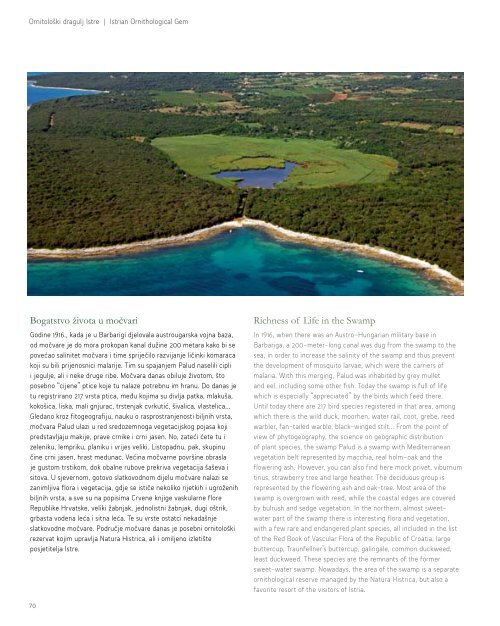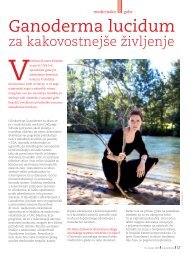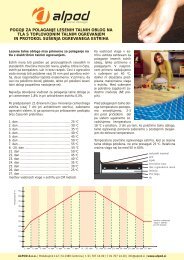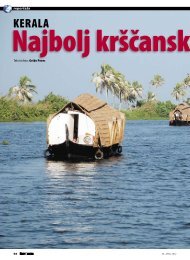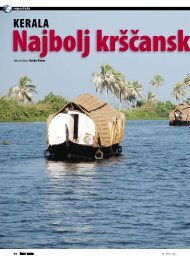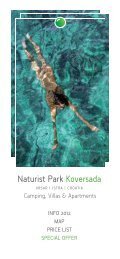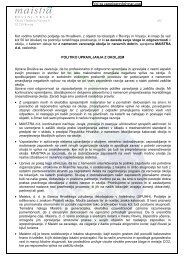You also want an ePaper? Increase the reach of your titles
YUMPU automatically turns print PDFs into web optimized ePapers that Google loves.
Ornitološki dragulj Istre | Istrian Ornithological Gem<br />
Bogatstvo života u močvari<br />
Godine 1916., kada je u Barbarigi djelovala austrougarska vojna baza,<br />
od močvare je do mora prokopan kanal dužine 200 metara kako bi se<br />
povećao salinitet močvara i time spriječilo razvijanje ličinki komaraca<br />
koji su bili prijenosnici malarije. Tim su spajanjem Palud naselili cipli<br />
i jegulje, ali i neke druge ribe. Močvara danas obiluje životom, što<br />
posebno “cijene” ptice koje tu nalaze potrebnu im hranu. Do danas je<br />
tu registrirano 217 vrsta ptica, među kojima su divlja patka, mlakuša,<br />
kokošica, liska, mali gnjurac, trstenjak cvrkutić, šivalica, vlastelica…<br />
Gledano kroz fitogeografiju, nauku o rasprostranjenosti biljnih vrsta,<br />
močvara Palud ulazi u red sredozemnoga vegetacijskog pojasa koji<br />
predstavljaju makije, prave crnike i crni jasen. No, zateći ćete tu i<br />
zeleniku, lempriku, planiku i vrijes veliki. Listopadnu, pak, skupinu<br />
čine crni jasen, hrast medunac. Većina močvarne površine obrasla<br />
je gustom trstikom, dok obalne rubove prekriva vegetacija šaševa i<br />
sitova. U sjevernom, gotovo slatkovodnom dijelu močvare nalazi se<br />
zanimljiva flora i vegetacija, gdje se ističe nekoliko rijetkih i ugroženih<br />
biljnih vrsta, a sve su na popisima Crvene knjige vaskularne flore<br />
Republike Hrvatske, veliki žabnjak, jednolistni žabnjak, dugi oštrik,<br />
grbasta vodena leća i sitna leća. Te su vrste ostatci nekadašnje<br />
slatkovodne močvare. Područje močvare danas je posebni ornitološki<br />
rezervat kojim upravlja Natura Histrica, ali i omiljeno izletište<br />
posjetitelja Istre.<br />
Richness of Life in the Swamp<br />
In 1916, when there was an Austro-Hungarian military base in<br />
Barbariga, a 200-meter-long canal was dug from the swamp to the<br />
sea, in order to increase the salinity of the swamp and thus prevent<br />
the development of mosquito larvae, which were the carriers of<br />
malaria. With this merging, Palud was inhabited by grey mullet<br />
and eel, including some other fish. Today the swamp is full of life<br />
which is especially “appreciated” by the birds which feed there.<br />
Until today there are 217 bird species registered in that area, among<br />
which there is the wild duck, moorhen, water rail, coot, grebe, reed<br />
warbler, fan-tailed warble, black-winged stilt… From the point of<br />
view of phytogeography, the science on geographic distribution<br />
of plant species, the swamp Palud is a swamp with Mediterranean<br />
vegetation belt represented by macchia, real holm-oak and the<br />
flowering ash. However, you can also find here mock privet, viburnum<br />
tinus, strawberry tree and large heather. The deciduous group is<br />
represented by the flowering ash and oak-tree. Most area of the<br />
swamp is overgrown with reed, while the coastal edges are covered<br />
by bulrush and sedge vegetation. In the northern, almost sweetwater<br />
part of the swamp there is interesting flora and vegetation,<br />
with a few rare and endangered plant species, all included in the list<br />
of the Red Book of Vascular Flora of the Republic of Croatia, large<br />
buttercup, Traunfellner’s buttercup, galingale, common duckweed,<br />
least duckweed. These species are the remnants of the former<br />
sweet-water swamp. Nowadays, the area of the swamp is a separate<br />
ornithological reserve managed by the Natura Histrica, but also a<br />
favorite resort of the visitors of Istria.<br />
70 71


